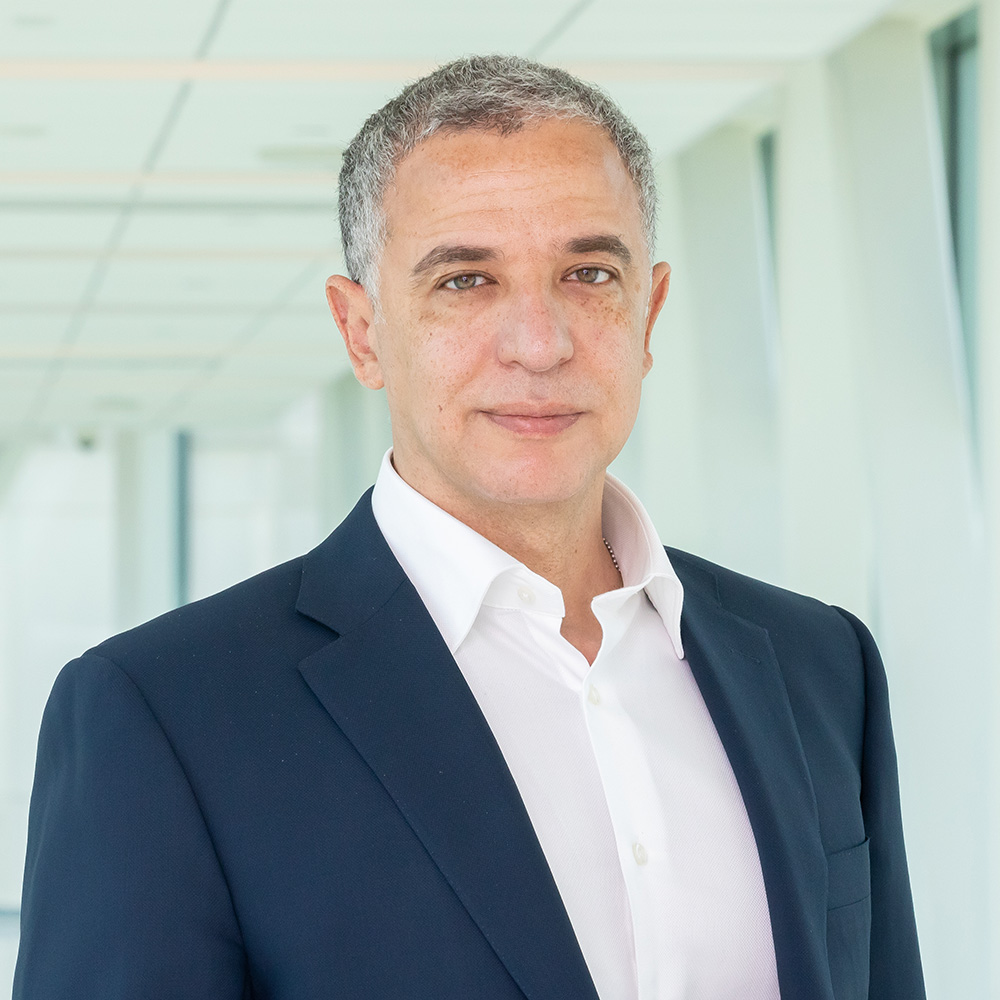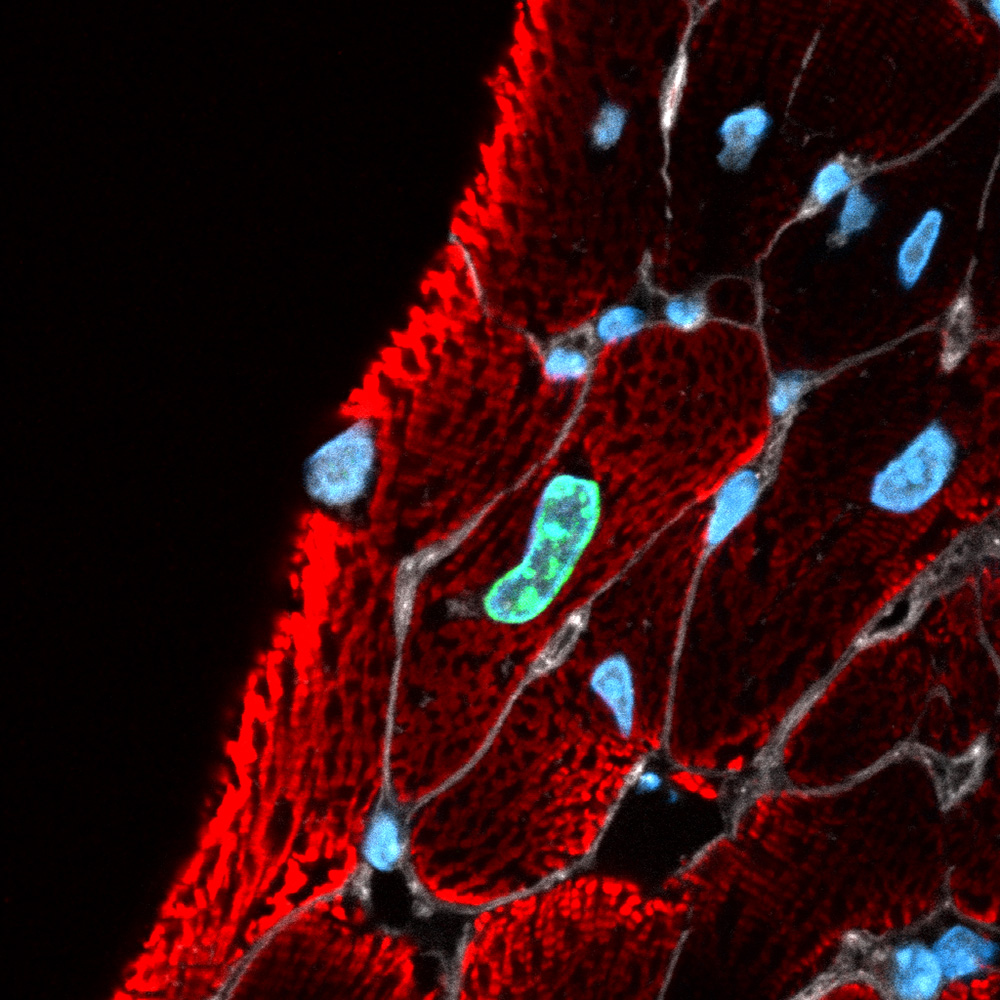UTSW researchers discover molecular switch for heart regeneration
Study points to new drug target for treating heart failure

DALLAS – Oct. 10, 2022 – During embryonic growth and for a brief time after birth, mammals have a powerful ability to regenerate damaged heart cells. Shortly thereafter, however, this capability fades. Now, scientists at UT Southwestern have discovered a molecular switch to restore the regenerative ability of adult heart cells. The findings, described in Nature Cardiovascular Research, point toward a potential pharmaceutical target for treating heart failure.
“Heart failure is a huge clinical problem. Once you sustain damage to the heart from a heart attack, an infection, or genetic abnormalities, the lost heart cells don’t come back,” said study leader Hesham Sadek, M.D., Ph.D., Professor of Internal Medicine in the Division of Cardiology and Associate Director of the Hamon Center for Regenerative Science and Medicine at UTSW. “Now, we are a step closer toward being able to change that.”
A few weeks after birth, the heart cells of newborn mammals shift from hyperplastic growth, in which new cells are created, to hypertrophic growth, in which existing cells can grow larger but don’t regenerate. Dr. Sadek’s group previously discovered that, in mice, high levels of the signaling molecule calcineurin can trigger this shift early, blocking the ability of embryonic heart cells to divide into new cells.

In the new work, they wanted to find out whether the opposite is true. If calcineurin acts like a brake on heart cell regeneration, then can eliminating calcineurin from adult heart cells restore their regenerative capacity?
When Dr. Sadek and his colleagues genetically removed the gene for calcineurin from the heart cells of mice, they found that this was true. Without calcineurin, the heart generated more new muscle cells, called cardiomyocytes, both in healthy mice and after a heart attack.
The researchers next tested whether blocking calcineurin with the drug known as tacrolimus – already approved by the FDA to prevent organ rejection – would have the same effect. In healthy mice, when the drug was either injected or delivered through an implanted pump, the results echoed what had been seen in the genetic studies: Blocking calcineurin led to the production of new heart cells.
“This was really exciting,” said Dr. Sadek. “To have an FDA-approved drug that lifts the brakes on organ regeneration in adult mammals is pretty incredible.”
When the team tested the drug on mice after a heart attack, however, the calcineurin blocker did not improve heart function. Dr. Sadek thinks this is due to other wide-ranging effects of calcineurin throughout the body, as it also targets the immune system and many inflammatory cells and molecules. In animals treated with tacrolimus, the researchers observed fewer immune cells traveling to the site of the heart injury (indeed, this is how tacrolimus helps prevent organ rejection in patients who receive transplants) and fewer new blood vessels within the heart compared to animals that did not receive the drug. This lack of inflammatory and vasculogenic responses prevents heart healing after a heart attack, the researchers hypothesized, even when the brakes on cardiomyocyte regeneration are lifted.
Despite the negative results in mice after heart attacks, Dr. Sadek and his team said the initial findings are encouraging and suggest ways that adult cardiomyocytes could eventually be regenerated in people with heart failure.
“The next step for this avenue of research is to somehow make a calcineurin blocker that is more targeted toward cardiomyocytes and doesn’t have these detrimental effects on the inflammatory response,” Dr. Sadek said.
This study was co-led by Nicholas T. Lam, Ph.D., and Ngoc Uyen Nhi Nguyen, Ph.D., both Assistant Instructors of Internal Medicine at UTSW who contributed equally to the project. Other researchers who contributed to the study include Mahmoud Salama Ahmed, Ching-Cheng Hsu, Shujuan Li, Ivan Menendez-Montes, Suwannee Thet, Waleed M. Elhelaly, Feng Xiao, Xiaoyu Wang, Noelle S. Williams, Diana C. Canseco, and Beverly A. Rothermel of UTSW; and Pamela E. Rios Coronado and Kristy Red-Horse of Stanford University.
Dr. Sadek holds the J. Fred Schoellkopf, Jr. Chair in Cardiology.
About UT Southwestern Medical Center
UT Southwestern, one of the nation’s premier academic medical centers, integrates pioneering biomedical research with exceptional clinical care and education. The institution’s faculty has received six Nobel Prizes, and includes 26 members of the National Academy of Sciences, 17 members of the National Academy of Medicine, and 14 Howard Hughes Medical Institute Investigators. The full-time faculty of more than 2,900 is responsible for groundbreaking medical advances and is committed to translating science-driven research quickly to new clinical treatments. UT Southwestern physicians provide care in more than 80 specialties to more than 100,000 hospitalized patients, more than 360,000 emergency room cases, and oversee nearly 4 million outpatient visits a year.
